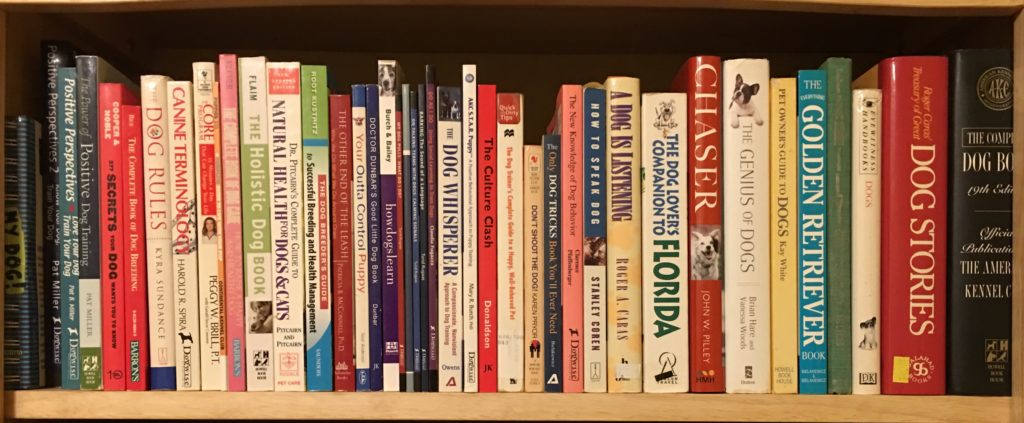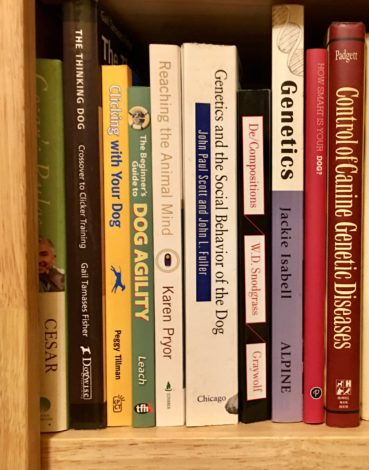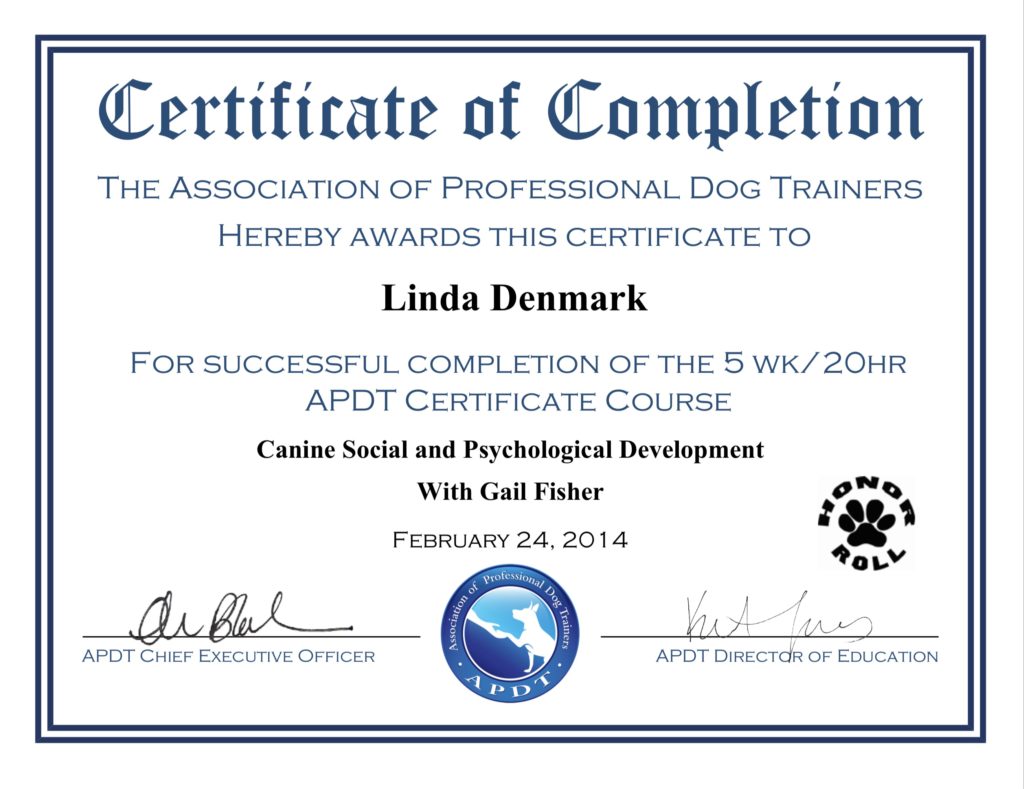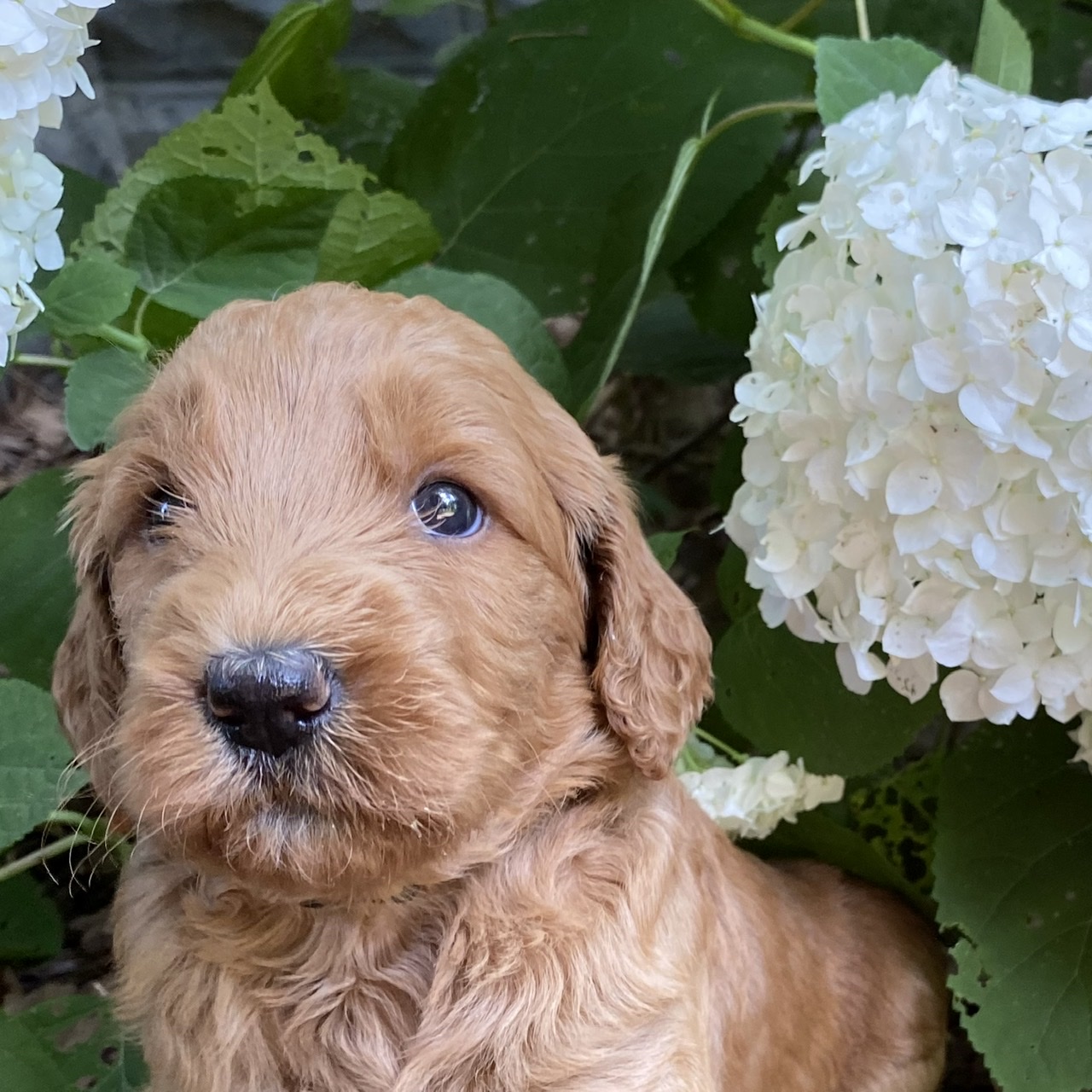Why Doodledawgs Are So Special!
Puppy Culture Program
I have begun using Puppy Culture methods, which includes much of what I was already doing with the addition of some things that are new to my program such as conditioning the pups from a very early age to having their nails clipped. Please do some research to find out more about what Puppy Culture involves.
Puppy kindergarten
Puppy Kindergarten is included in the basic puppy package and begins at age five weeks and concludes at age eight weeks.
The video above is just one of many on my YouTube channel if you want to find out more about my training.
The Puppy Kindergarten included with every Doodledawg puppy includes the following:
- loose leash accustomization
- beginning crate training
- litter box training
- grooming accustomization
- sound desensitization
- group “SIT”
- group “COME”
- exposure to different textures and environments
- socialization
Extended training program
Extra training is available after the age of eight weeks with a minimum of two weeks and a maximum of four weeks training. The cost for the extra training is $250 per week with $50 per week paid as a training deposit and the remainder due when your puppy is ready to go home.
Those remaining for extra training will be working on the following goals. All things learned in weeks 5 to 8 will continue to be reinforced. Training is incremental, which means that the pup will continue to have any skills already learned reinforced. In addition to the actual training, the puppy will have lots of time to interact with the other dogs, both adult dogs and littermates. There will also be plenty of cat exposure as well as rabbits and chickens. Desensitization and crate training are continuing as well as house-training. Please keep in mind that when a goal is shown for a certain week, that means it is introduced that week. It takes repetition to master everything and although some things are mastered the week they are introduced, others may take several weeks to master. In addition to what is outlined in the following section, each puppy will be assessed and worked with according to the needs of the puppy as well as of its new family. For example, if a puppy is somewhat shy, he will be helped to meet challenges that will build his confidence. If a family has small children, the puppy will be exposed to small children during training and be “kid gentled”.
Age 8 – 9 Weeks
- Socialization away from home begins with lots of new experiences introduced such as trips in the car, to the vet’s office, visiting and so on.
- Short daily walks to reinforce loose leash training (varied such as driveway loop, walking in the woods, open pasture, paved road, etc.)
- Weather permitting; there will be a wading pool for water exploration.
- “Place” – puppy will learn to go to a raised dog bed and wait until released.
- “Down” – puppy will learn to lie down with hand signal and verbal cue
- “Settle” – puppy will learn to relax on cue
- Trading – puppy will learn to trade what he shouldn’t have for something he can have.
- Release with “O.K!”
- Pup will continue to have lots of dog social interaction to properly learn dog etiquette, dog body language and bite inhibition
Age 9 – 10 Weeks
- Gradually longer walks with loose leash
- “Come” – puppy will learn to come when called
- “Give” – puppy will learn to release an object from his mouth
- “Fetch” – puppy will learn to retrieve and “give” a ball and other objects
- “Wait” – puppy will learn to wait until released
- Sitting politely while food is served begins (incorporates “wait”)
Age 10 – 11 Weeks
- Sitting politely before going out the door (incorporates “wait”
- “Stay” – puppy will learn to stay in position until you release him
- Meeting strange dogs such as at the pet store
- Introduction to “different” strangers (beards, hats, walkers, wheelchairs, etc.)
- Walks increased to up to 1⁄2 mile long
- Pup will be handled by others, to get it used to working with someone other than me
- Increased freedom indoors
- “Leave it” – puppy will learn to leave something he should not have
Age 11 – 12 Weeks
- “Heel” – puppy will learn to walk close beside left leg even when off leash
- “Wait” while I go out of sight
- “Stay” while I go out of sight
- “Paw” – puppy will learn to offer a paw. Very astute pups may learn “left paw, right paw”
- Other simple tricks such as “Spin” or “Crawl”
- Continued reinforcement of all skills previously learned
AdditiOnal information
Sound desensitization is a system I use of playing a soundtrack designed to desensitize dogs to normally fearful sounds, like vaccum cleaners, washing machines, fireworks, thunderstorms, sirens, etc. I start playing the soundtrack at a low volume shortly after the puppies ears open. I do this intermittently, with periods of normal household sounds and periods with the soundtrack. Gradually as the pups become used to the sounds, I increase the volume.
Before I started using the sound desensitization, I had puppies that were nervous at the airport from the noise of planes, traffic and so on. I worried about them being fearful on their flights. After I started using this program, the pups no longer showed fear at the airport. Owners who got the desensitized pups reported back to me how pleased they were that they could take their dogs to a parade, on a motorboat, and so on, with no fear at all.
Qualifications
I have had a lifelong fascination and love of dogs. When my late husband’s cancer progressed to the point where he had to have me home to care for him, I had to make some life changing decisions. I thought maybe I could work from home at something I love and am good at. Dog training and breeding was one option. Art was another. Those are my passions. Dogs and art. Dogs have the ability to lift your spirits. My art might help me through the time we were dealing with leukemia, but it would not help my husband. Dogs won!
When I am passionate about an interest, I give it my all. I research and read and educate myself. This is what I did while developing Doodledawgs.



All this reading, studying and research enabled me to develop an early training program that would give my puppies the best head start possible. It also would give the families adopting my puppies the dog of their dreams.
